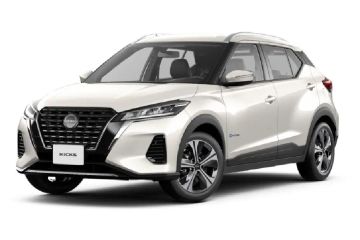![Money's worth: Are hybrids really worth the investment? 01]()
On the face of it, the top-of-the-line Nissan Kicks e-POWER VL is priced at ₱1,539,000 – a lot to pay, despite the Kicks being the cheapest hybrid on the market.
By contrast, the top-of-the-line Geely Coolray is ₱1,269,000. It's still a lot, but the ₱270,000 savings is certainly no small sum.
The formula
Here's how we'll calculate the projected cost for the Coolray and the Kicks.
First, we take the average price per kilometer to run each vehicle by figuring out how much fuel they use.
Setting aside the price of tires as they can fit the same size tires anyway, our next major expense will be servicing costs.
The next piece will be predicting the number of kilometers each car will run per year.
And the last piece of the formula will be how much you save every year thanks to the incentives that the government gives to hybrid owners.
Lastly, we’ll multiply this by the number of useful years the car has with any particular family – five years for both.
Fuel savings
Assuming that gasoline costs an average of ₱75 a liter – accounting for the ups and downs we see in the market – we can use that to translate fuel consumption into savings.
The Coolray has a rated combined fuel consumption of around 11 km/l, while the Kicks can get anywhere from 15 to 30 km/l combined, so we'll take the median of 22.5 km/l.
As such, the average price per kilometer is ₱6.82 for the Coolray and ₱3.33 for the Kicks.
Predicting how far each car will drive in a year, let’s place the average daily commute of a single-car family of four at 20 kilometers a day, seven days a week.
Over the course of one month, the average car will run 600 kilometers, totaling up to 7,200 kilometers a year, excluding trips that people might do for leisure.
Multiplying this number by the price per kilometer for both cars, the Coolray will cost ₱49,104 and the Kicks will cost ₱23,976 to run for one year.
Over the span of five years, that will result in a savings of ₱125,640 when you buy the Kicks.
Maintenance costs
Looking at maintenance schedules, the Coolray can cost an average of ₱8,000 a year in servicing, if we stick to 7,200 kilometers annually.
While there’s no word on the yearly maintenance schedule for the Kicks, let's assume that the 1.2-liter inline-3 gasoline generator will require the same kind of maintenance as the Coolray, so pegging it at ₱8,000 makes sense.
As such, both crossovers will cost ₱40,000 over five years in maintenance.
The Kicks does need a replacement battery after 10 years, but Nissan is confident in the lifetime of the battery that it’s given its own warranty of 10 years with no mileage limits, so it’s a negligible expense for this five-year ownership projection.
Registration discount
Lastly, the Kicks costs 15 percent less to register at the Land Transportation Office thanks to the incentives under Republic Act 11697 or the "Electric Vehicle Industry Development Act" (EVIDA).
As such, the typical ₱4,500 registration fee would become an automatic ₱3,825 expense.
Over the course of five years, that adds up to ₱19,125 for the Kicks and ₱22,500 for the Coolray, which is a saving of just ₱3,375.
Totaling all of your savings, the Nissan Kicks over five years will save you around ₱129,000 over a similar Geely Coolray.
But against a price increase of ₱270,000, the Coolray is still the cheaper vehicle to own and operate, for now.
Financial incentives in the works
It should be noted, however, that the prices of electric vehicles (EV) and hybrids might still go down thanks to further implementation of EVIDA.
This could completely slash all the import duties, customs duties, and other tariffs and taxes cars are burdened with, which would make these new energy vehicles as cheap as their non-electrified counterparts.
In addition, other financial incentives are in the works that could make owning a hybrid or EV easier.
Though it's unlikely that electrified vehicles will become cheaper than their non-electrified counterparts, measures like these can at least close the gap and make the buying decision that much easier.
Investing early
So is it worth it to own and operate a hybrid vehicle knowing that your supposed savings, as of press time, aren't going to cover the price difference to a similarly equipped rival?
Perhaps, if you think of it as an investment in the future of hybrids and EVs in the country.
It's well-known that companies are still testing the waters to see if the Philippine market will respond positively to hybrids.
Buying them even while they're slightly more expensive than equivalent non-hybrid counterparts will mean more companies will start offering them.
And more competition means more choices and, inevitably better prices, too. And everybody wins when new tech is more affordable.







